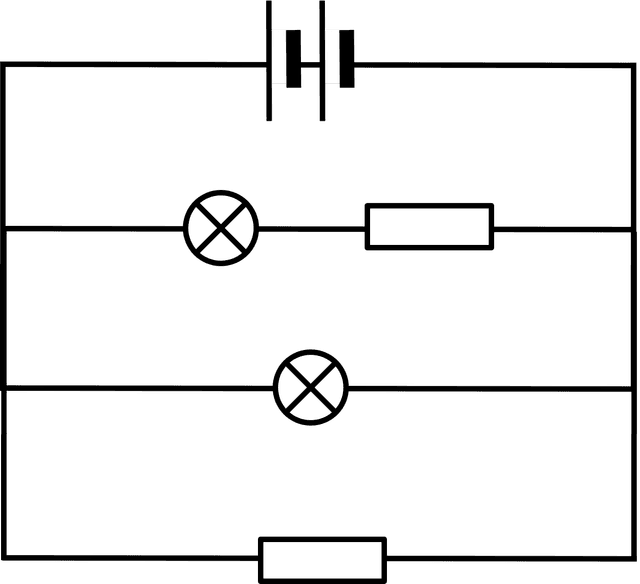Analysing parallel circuits
I can use the rules for current and potential difference and the equation I = V ÷ R to analyse parallel circuits.
Analysing parallel circuits
I can use the rules for current and potential difference and the equation I = V ÷ R to analyse parallel circuits.
These resources will be removed by end of Summer Term 2025.
Lesson details
Key learning points
- Current can be calculated using the equation: current = p.d. ÷ resistance (I = V ÷ R).
- The rules of current and p.d. for a parallel circuit can be applied to find some missing values of current and p.d.
- The equation I = V ÷ R can be rearranged so that either p.d. or R is the subject of the equation.
- If any two values in the equation I = V ÷ R are known, the third can be calculated.
- If only one value in I = V ÷ R is shown for a component, circuit rules need to be applied to the rest of the circuit.
Keywords
Current - the rate of flow of charge in a circuit
Branch - a separate series loop in a parallel circuit
Resistance - a property of materials that makes it harder for current to flow
Potential difference (p.d.) - a measure of how 'hard' an electric field can push charge
Parallel - a type of circuit in which there are two or more separate branches
Common misconception
To solve circuit problems you need only to put numbers into equations.
Talk through circuits with pupils before analysing them in order to develop an intrinsic understanding of how circuits work; research shows this improves pupils’ problem solving ability for electric circuits.
To help you plan your year 10 physics lesson on: Analysing parallel circuits, download all teaching resources for free and adapt to suit your pupils' needs...
To help you plan your year 10 physics lesson on: Analysing parallel circuits, download all teaching resources for free and adapt to suit your pupils' needs.
The starter quiz will activate and check your pupils' prior knowledge, with versions available both with and without answers in PDF format.
We use learning cycles to break down learning into key concepts or ideas linked to the learning outcome. Each learning cycle features explanations with checks for understanding and practice tasks with feedback. All of this is found in our slide decks, ready for you to download and edit. The practice tasks are also available as printable worksheets and some lessons have additional materials with extra material you might need for teaching the lesson.
The assessment exit quiz will test your pupils' understanding of the key learning points.
Our video is a tool for planning, showing how other teachers might teach the lesson, offering helpful tips, modelled explanations and inspiration for your own delivery in the classroom. Plus, you can set it as homework or revision for pupils and keep their learning on track by sharing an online pupil version of this lesson.
Explore more key stage 4 physics lessons from the Electric fields and circuit calculations unit, dive into the full secondary physics curriculum, or learn more about lesson planning.

Licence
Starter quiz
6 Questions

Exit quiz
6 Questions








